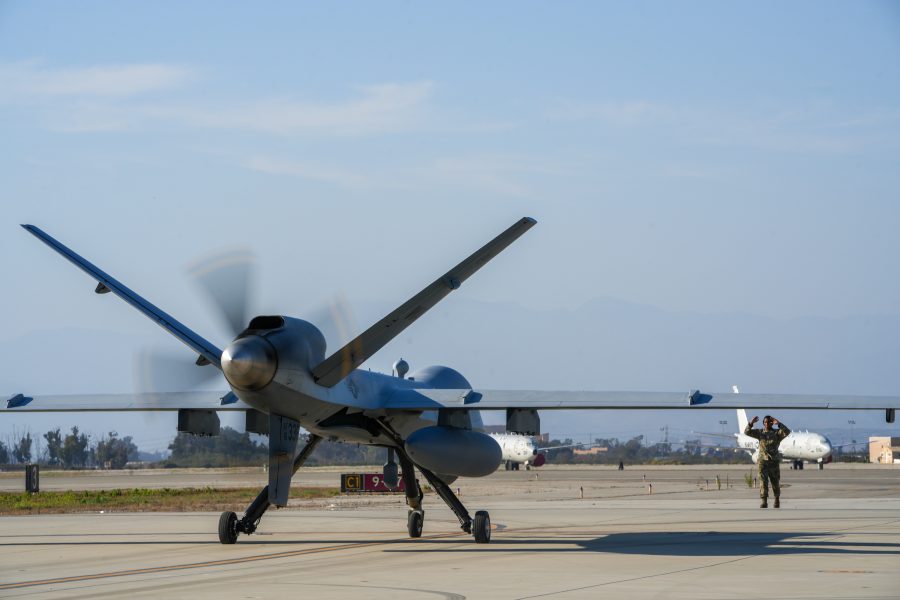An MQ-9 Reaper drone plunged into the Mediterranean Sea last winter after its propeller suddenly disconnected from the engine, a recently released Air Force investigation concluded.
The mishap occurred Dec. 16, 2024, when the mechanical element joining the drone’s propeller to its engine failed while on its way to a mission in the area, the service said in its investigation report published July 30. The probe couldn’t determine why the equipment failed because the Air Force didn’t recover the wreckage.
Losing the aircraft cost the Air Force $13.2 million, the service said. No one was hurt or no other property damaged in the incident.
The MQ-9 belonged to the 432nd Wing at Creech Air Force Base, Nev., one of the service’s drone warfare hubs. A drone pilot with the 20th Attack Squadron—a unit affiliated with the 432nd Wing but based at Whiteman Air Force Base, Missouri—was flying the Reaper at the time of the crash. The squadron uses MQ-9s to collect intelligence from above and to strike targets without putting U.S. troops in harm’s way.
The drone launched from an undisclosed location in Europe and was headed for an operational mission around 8 p.m. local time when it abruptly slowed and began to fall. Engine data showed that parts were moving at two different speeds, an issue that occurs only if the propeller and engine are not working in tandem, investigators concluded in their report.
“Over the next 16 minutes, as the aircraft descended, the [crew] executed multiple checklists to maintain control and restore thrust to the aircraft,” the report said. “Metal debris [were] detected in the engine oil. With indications of engine internal damage, the [pilot] shut down the engine and the [crew] executed a forced landing into the water.”
The drone stopped communicating with the crew shortly before it hit the surface of the Mediterranean.
Investigators determined the mishap was caused by a failure of the “splined coupling assembly,” the report said, leading to a “sudden and permanent decoupling of the propeller from the engine, resulting in an unrecoverable loss of thrust.”
General Atomics, which builds the MQ-9, pointed to a ring inside the gearbox as the most likely culprit behind the failed joint, the service said. That ring has a “history of excessive wear and failure,” according to the report. The ring on the crashed MQ-9 was due for replacement after about 1,500 flight hours but may have worn out early.
The investigation found no evidence suggesting the part was defective.
MQ-9 accidents are not uncommon; from fiscal 2015 to 2021, the last year Air Force updated its public MQ-9 flight mishap data, the service averaged 7.2 class A mishaps, defined as those that cost at least $2.5 million; destroy a military aircraft; or result in death or permanent, total disability. Over the same stretch, nearly 4.6 drones were destroyed per year.
At least 12 more drones have suffered mishaps since October 2022. On top of that, several have been shot down by Houthi rebels and other militia groups in the Middle East.
In 2025, the Air Force Safety Center has logged three Class A unmanned aircraft mishaps as of Aug. 5. That’s down from a recent peak of nine in 2023. The center’s data does not specify which drones are included in that total.
The service expects its MQ-9 fleet will shrink from around 230 to about 190 next year through a combination of retirements and accidents, according to fiscal 2026 budget documents.
This story was corrected Aug. 15 to reflect that though the mechanical part connecting the propeller to the engine failed, decoupling the two, the propeller did not fall off.


